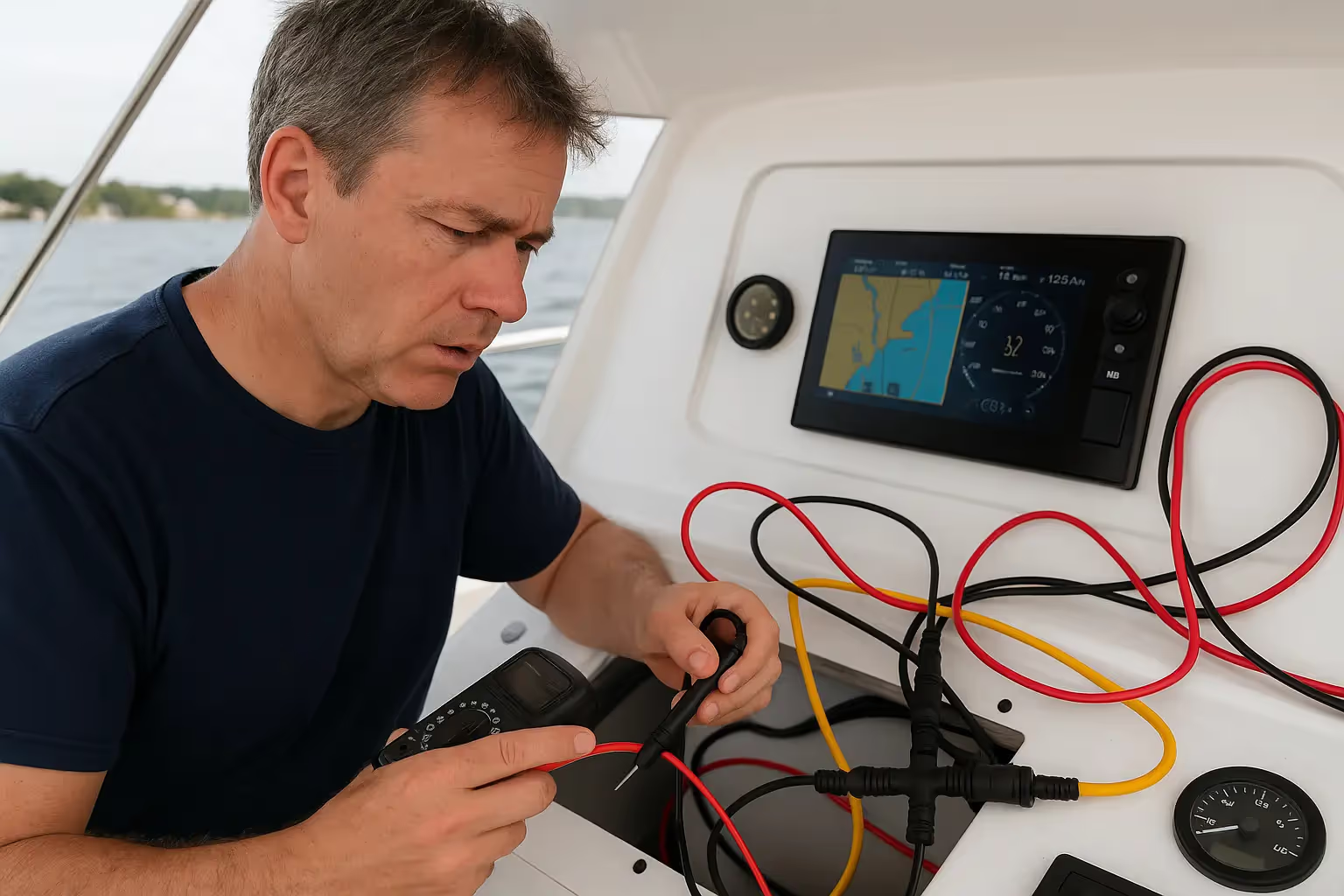Understanding Buoys and Their Lights: A Complete Guide for Sailors

This guide covers the main buoy types you’ll encounter, following the IALA Maritime Buoyage System (Region A) — which is used in Europe, including around Mallorca.
1. Lateral Marks
These indicate the edges of a channel.
- Port-hand mark
- Colour: Red
- Shape: Can (cylindrical)
- Topmark: Red cylinder
- Light (if lit): Red light — any rhythm except those used for cardinal, isolated danger, or safe water marks (often Fl R 5s).
- Meaning: Keep this buoy to your port (left) side when entering from seaward.
- Starboard-hand mark
- Colour: Green
- Shape: Conical
- Topmark: Green cone (point up)
- Light (if lit): Green light — any rhythm except those reserved for other marks (often Fl G 5s).
- Meaning: Keep this buoy to your starboard (right) side when entering from seaward.
2. Cardinal Marks
These indicate the direction of safest water relative to a hazard.
Named for the cardinal points (North, East, South, West).
- North Cardinal
- Colour: Black above yellow
- Topmark: Two black cones pointing up
- Light: Continuous quick (Q) or very quick (VQ) white flashing
- Meaning: Safe water lies north of the mark.
- East Cardinal
- Colour: Black with yellow band in middle
- Topmark: Two black cones, points apart (like an hourglass)
- Light: Q (3) or VQ (3) every 10 seconds
- Meaning: Safe water lies east of the mark.
- South Cardinal
- Colour: Yellow above black
- Topmark: Two black cones pointing down
- Light: Q (6) + long flash (LFl) every 15 seconds, or VQ (6) + LFl 15s
- Meaning: Safe water lies south of the mark.
- West Cardinal
- Colour: Yellow with black band in middle
- Topmark: Two black cones points together (point up & point down)
- Light: Q (9) or VQ (9) every 15 seconds
- Meaning: Safe water lies west of the mark.
3. Isolated Danger Mark
Marks a small, isolated danger with safe water all around.
- Colour: Black with one or more broad horizontal red bands
- Topmark: Two black spheres
- Light: Group flashing white (Fl (2)) every 5 or 10 seconds
- Meaning: Danger lies immediately beneath or nearby; keep well clear.
4. Safe Water Mark
Indicates there is navigable water all around.
Often used to mark the start of a channel.
- Colour: Red and white vertical stripes
- Shape: Spherical, pillar, or spar
- Topmark: Single red sphere
- Light: White, usually Iso 10s, Oc 10s, or LFl 10s (may also be Morse “A”: one short, one long)
- Meaning: Safe water in all directions.
5. Special Mark
Indicates special areas or features (not primarily for navigation safety). Examples: traffic separation zones, mooring areas, military exercise zones, or regatta areas.
- Colour: Yellow
- Topmark: Yellow “X” (St. Andrew’s cross)
- Light: Yellow light — any rhythm not used for white lights on cardinal/safe water/isolated danger marks
- Meaning: Check your chart or sailing instructions for specific meaning in the area.
6. Emergency Wreck Marking Buoy
Introduced to mark new wrecks until a permanent mark can be placed.
- Colour: Blue and yellow vertical stripes
- Topmark: Yellow cross
- Light: Alternating blue and yellow flashing (1s each)
- Meaning: Marks a recently sunk wreck; avoid area.
Quick Light Rhythm Reference Table

Why This Matters
Knowing buoy types — and especially their light characteristics — is an essential part of safe navigation.
When sailing at night or in reduced visibility, lights may be the only clue to what lies ahead.
At Mallorca Sailing Academy, we cover buoyage in detail on our RYA Day Skipper and Competent Crew courses, combining theory with practical identification on the water.
The Balearics provide an ideal training ground, with plenty of real-world examples to test your skills.
Learn more or book your next course at: mallorcasailing.com















